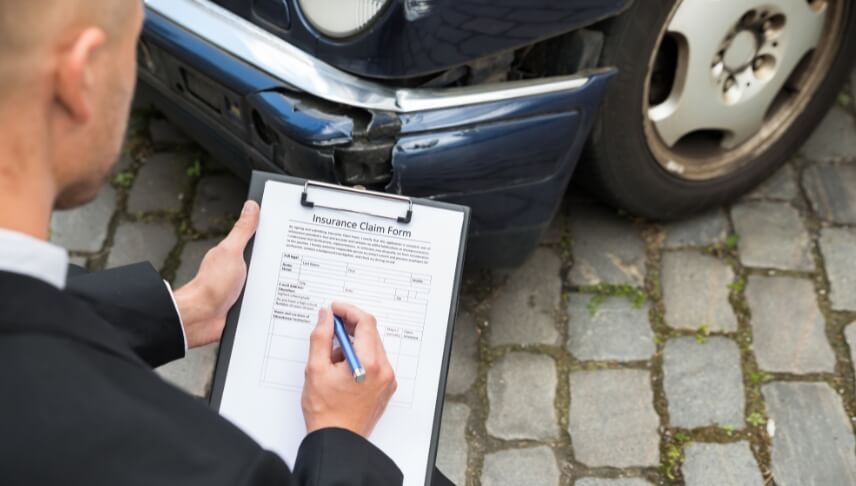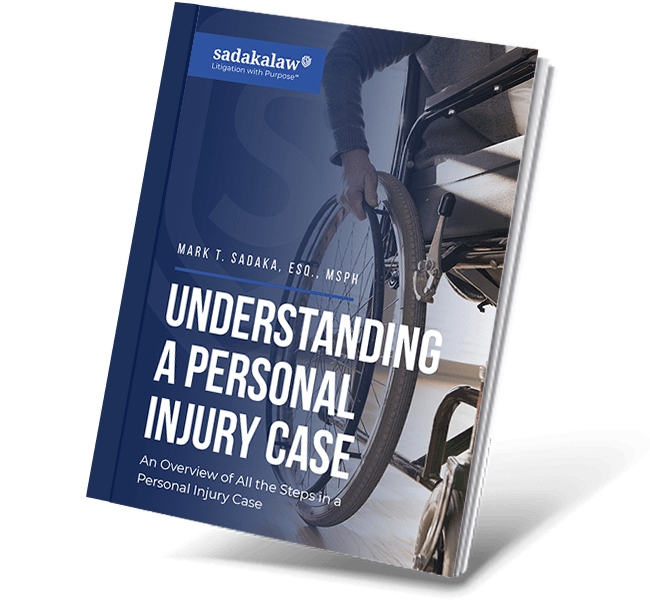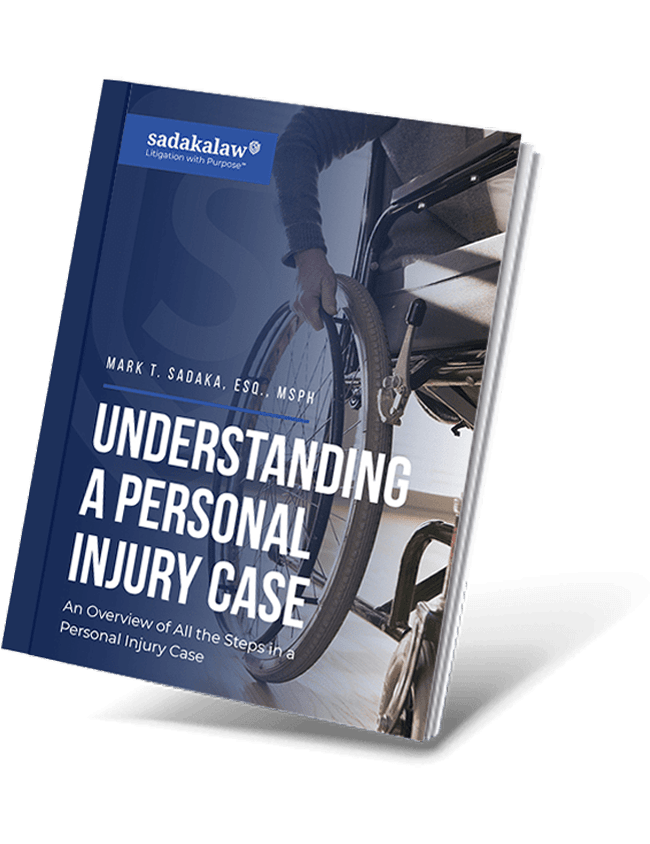In the United States, each state can set its own requirements when it comes to mandatory auto insurance coverage. Generally, drivers need coverage for injuries and damages to automobiles and other property. However, who pays for these expenses after a car accident may vary.
No-fault auto insurance states have different requirements for minimum coverage than many other states. They also have a different claims process for medical costs. By understanding how the system works in these states, you can choose a policy that works for you and know what to do if you are in an accident.
Sadaka Law provides professional legal guidance when navigating accidents in no-fault insurance states, like New Jersey. Call today to schedule your consultation.
Coverage Details Under No-Fault Auto Insurance

U.S. drivers must carry liability insurance in case they cause an accident. If this happens, the insurance will pay for third-party property damage and injuries.
However, in some states, like New Jersey, the at-fault driver’s insurance policy would not be responsible for the other parties’ medical expenses. Drivers in these states, known as no-fault states, must carry personal injury protection coverage (PIP) to pay for these expenses.
In no-fault insurance states, the driver’s own PIP coverage would pay for their injuries. Contrast this with tort states, where the at-fault driver’s insurance pays for all damages, including injuries.
PIP coverage, sometimes called no-fault insurance, covers medical bills for injuries sustained during the accident. It may also cover lost wages, funeral expenses, rehabilitative costs, and services such as childcare. In general, PIP covers several types of expenses that MedPay insurance may not.
No-fault insurance can also provide coverage for injuries in a no-fault accident. In these cases, an uncontrollable circumstance caused the accident, such as a medical emergency or a traffic obstruction. Drivers were unable to avoid the accident, and insurance companies would not consider either at fault.
Limits and Exclusions
A driver’s PIP coverage would pay expenses up to their policy’s stated limits. No-fault insurance only covers personal injuries to the policyholder, not property or auto damage. Instead, the at-fault driver’s liability coverage would pay for damage to any third-party cars or property.
Meanwhile, collision coverage would pay for damage to the policyholder’s car, and comprehensive coverage would pay for repairs caused by animals, vandalism, fire, or weather events.
Which States Have No-Fault Auto Insurance?
There are 12 no-fault auto insurance states. Each one has its own minimum PIP coverage requirement:
- Florida: $10,000
- Hawaii: $10,000
- Kansas: $4,500
- Kentucky: $10,000
- Massachusetts: $8,000
- Michigan: $50,000
- Minnesota: $40,000
- New Jersey: $15,000
- New York: $50,000
- North Dakota: $30,000
- Pennsylvania: $5,000
- Utah: $3,000
Three of these states, Kentucky, New Jersey, and Pennsylvania, are optional no-fault or choice no-fault states. In these states, drivers can choose whether to participate in a no-fault or traditional auto policy.
In states with add-on no-fault insurance, drivers have the option to add personal injury protection coverage. Electing this coverage would require a driver’s insurance company to pay for their medical and related expenses, regardless of who’s at fault in an accident.
Characteristics of No-Fault Auto Insurance States

A key characteristic of no-fault insurance is the restriction on lawsuits. However, in some circumstances, drivers may be able to sue. If a driver’s medical costs exceed their PIP coverage limits, they may be eligible to sue.
There is also a requirement of how serious injuries need to be. Conditions that might meet this requirement include dismemberment, significant disfigurement, and loss of a fetus.
If emotional trauma is severe enough and has direct links to the accident, you may be able to include emotional distress in the damages.
The insurance system here is in contrast to those of tort states where the at-fault driver’s insurance company pays for all damages. In addition, the injured party may sue the at-fault driver.
It’s important to note that insurance companies can still assess fault for other reasons, even in no-fault states. An insurance company may want to evaluate your risk and adjust future premiums if they find you are at fault in an accident.
Claim Process in No-Fault States
In no-fault auto insurance states, drivers must submit claims to their own insurance company. It doesn’t matter who caused the accident. The requirement considers your residency, not where the accident occurs.
If you are in an accident in a no-fault state, you must follow the correct steps to file a claim.
Immediately After the Accident
The claim process starts immediately after the accident. You must take certain actions within the first moments of the accident and address other time-sensitive matters as soon as possible.
- Seek medical attention: If you or another party needs emergency medical attention, taking care of that person is the top priority. Call 911 immediately. Make sure you are in a safe area before proceeding to the other steps.
- Contact your insurance company: Let them know about the accident and provide them with any details they ask for. Doing so may allow them to give you specific information regarding what you should do next and how to proceed.
- Exchange information: Make sure you gather the other driver’s information, including their name, contact information, insurance information, and driver’s license. Write this down somewhere so you won’t forget it; don’t just assume you will remember what they say.
- Gather and retain evidence: Take photos of the scene and any damage. Do so from multiple angles, and even consider including video. The more evidence you have, the more likely you will be able to prove your case later on.
- Ask for a copy of the police report: If police officers respond to the scene, ask for a copy of the police report. Store this in a safe place as well.
- Consult an attorney: Legal counsel can help you navigate your claim successfully and maximize your compensation.
Filing a Claim

After you take care of some initial steps, the process of filing a claim can begin. To do this, you need to follow the steps to submit and follow up on your claim if you live in New Jersey or another no-fault state.
- Submit a claim: You must submit your claim before the deadline. Typically, the limit is 30 days from the accident.
- Ensure compliance: Make sure you follow all requirements for your policy.
- Keep records: Keep copies of all communication related to the accident. These records will be useful if contradictions occur later in the process.
- If denied: If the insurance company denies your claim, the process isn’t necessarily over. Request the reason for the denial in writing. You can discuss the steps for appeal with an attorney.
Advantages and Disadvantages of No-Fault Auto Insurance
You might wonder why no-fault auto insurance states choose to have these laws. The main reason is that it leads to fewer lawsuits over medical costs.
The policyholder’s own insurance would pay for their medical bills, negating the need to sue the other driver for compensation. Because of this, the system is more efficient, with faster payments to policyholders and less administrative work for legal and medical professionals.
However, there are downsides to this insurance system compared to fault-based systems. Policyholders in New Jersey tend to face higher insurance premiums. Generally, claims paid regardless of fault, possible exaggerations of injuries, repeat offenders, and possible increases in fraud cause this.
It’s also more important to stay knowledgeable about insurance laws in New Jersey, as the claims process might change. Finally, being in a no-fault state may mean you want to consult an attorney if you have a complex case.
Consult With an Attorney To Help Your Car Injury Case
If you sustain injuries in an accident, your no-fault insurance coverage may make it easy to cover your medical costs. However, the process is precise and requires understanding all of the details that go into this unique type of insurance.
Because of this, it may be worth speaking with an attorney. Our attorneys at Sadaka Law have the skills to walk you through each step of the process. We will make sure that you are taking the right actions at each step, provide you with advice, and make sure you don’t make a mistake.
If you face serious injuries, there are more reasons to speak with an attorney. In these cases, you may be able to sue for additional damages. If this is an option, the exact nature of how much you can sue for depends on your specific case.
However, in either case, an experienced attorney can help you. They will navigate the claims process, file appeals, and build a lawsuit if needed.
Understand Your Rights in a No-Fault Insurance State

If you live in one of the 12 no-fault auto insurance states, including New Jersey, it’s important to understand what this means for you. Be sure you meet the PIP coverage requirements and stay up to date on laws that affect you.
Wondering what’s next after your auto accident? Let Sadaka Law in Englewood, NJ, help. Call us at (800) 810-3457 to schedule your consultation and find out if you have a case.


